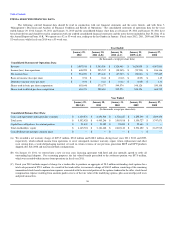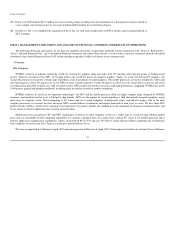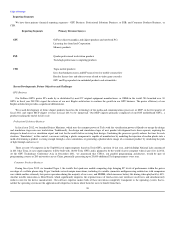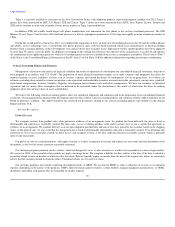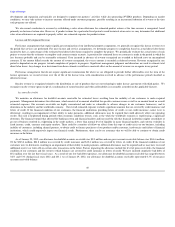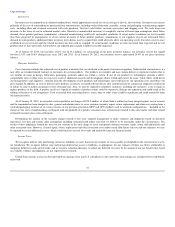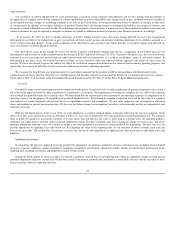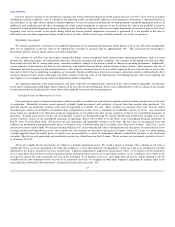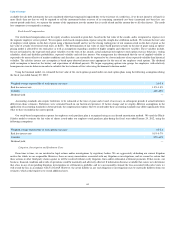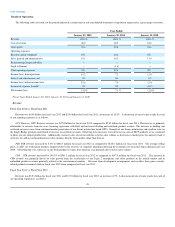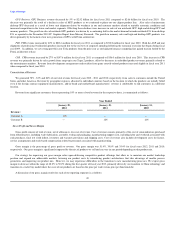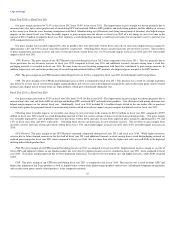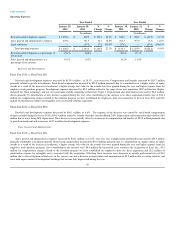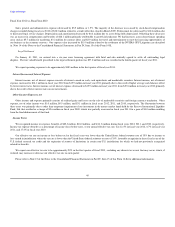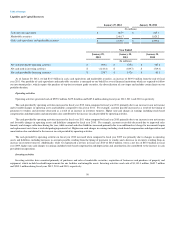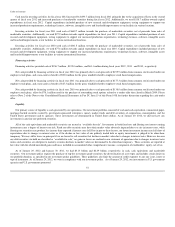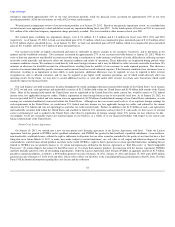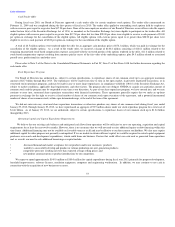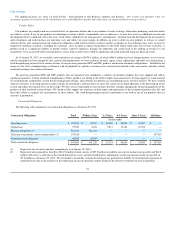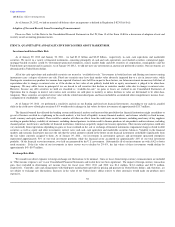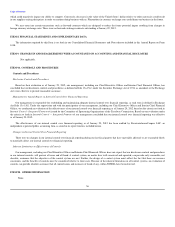NVIDIA 2012 Annual Report Download - page 47
Download and view the complete annual report
Please find page 47 of the 2012 NVIDIA annual report below. You can navigate through the pages in the report by either clicking on the pages listed below, or by using the keyword search tool below to find specific information within the annual report.
Table of Contents
GPU Business. GPU Business revenue decreased by 5% to $2.52 billion for fiscal year 2011 compared to $2.66 billion for fiscal year 2010. The
decrease was primarily the result of a decline in sales of MCP products as we continued to phase out our chipset product line. Also sales of mainstream
desktop GPU decreased as a result of lower unit shipments driven by weakness in our end customer markets related to unstable economic conditions and
increased competition in the lower-end market segments. Offsetting these declines were increases in sales of our notebook GPU, high-end desktop GPU and
memory products. The growth in sales of notebook GPU products was driven by a continuing shift in the market demand towards notebook PCs from desktop
PCs as reported in the December 2010 PC Graphics Report from Mercury Research. The growth in memory sales and high-end desktop GPU products was
driven primarily by the launch of our new generation of GPUs with Fermi architecture.
PSB . PSB revenue increased by 60% to $818.6 million for fiscal year 2011 as compared to $510.0 million for fiscal year 2010. Both the ASP and unit
shipments of professional workstation products increased due to the recovery of corporate spending following the economic recession that began during fiscal
year 2009. In addition, we saw strong growth in our Tesla products from the prior year as our high performance computing line gained traction fueled by the
Fermi architecture release.
CPB. CPB revenue increased by 27% to $197.6 million for fiscal year 2011 as compared to $156.0 million for fiscal year 2010. This increase in CPB
revenue was primarily driven by sales growth from ramp up in our Tegra 2 products, offset by decreases in embedded product revenues primarily related to
the entertainment markets. Revenue from development arrangements and royalties from game console-related products increased slightly in fiscal year 2011
when compared to fiscal year 2010.
Concentration of Revenue
We generated 78% , 83% and 84% of our total revenue for fiscal years 2012 , 2011 and 2010, respectively, from sales to customers outside the United
States and other Americas. Revenue by geographic region is allocated to individual countries based on the location to which the products are initially billed
even if the foreign contract equipment manufacturers, add-in board and motherboard manufacturers’ revenue is attributable to end customers in a different
location.
Revenue from significant customers, those representing 10% or more of total revenue for the respective dates, is summarized as follows:
Year Ended
January 29,
2012 January 30,
2011 January 31,
2010
Revenue:
Customer A 11% — —
Customer B — 12% 12%
Gross Profit and Gross Margin
Gross profit consists of total revenue, net of allowances, less cost of revenue. Cost of revenue consists primarily of the cost of semiconductors purchased
from subcontractors, including wafer fabrication, assembly, testing and packaging, manufacturing support costs, including labor and overhead associated with
such purchases, final test yield fallout, inventory and warranty provisions and shipping costs. Cost of revenue also includes development costs for license,
service arrangements and stock-based compensation related to personnel associated with manufacturing.
Gross margin is the percentage of gross profit to revenue. Our gross margin was 51.4%, 39.8% and 35.4% for fiscal years 2012, 2011 and 2010,
respectively. Our gross margin is significantly impacted by the mix of products we sell and can vary in any period depending on that product mix.
Our strategy for improving our gross margin relies upon delivering competitive product offerings that allow us to maintain our market leadership
position and expand our addressable markets, lowering our product costs by introducing product architectures that take advantage of smaller process
geometries and improving our product mix. However, we may experience difficulties in the transition to new manufacturing processes. We expect gross
margin to decrease within the range of 48.2% to 50.2% during the first quarter of fiscal year 2013, primarily driven by our transition to 28nm technology and
transition to a wafer buy model where the costs of our products are based on the price per wafer versus price per functional die.
A discussion of our gross margin results for each of our reporting segments is as follows:
46


